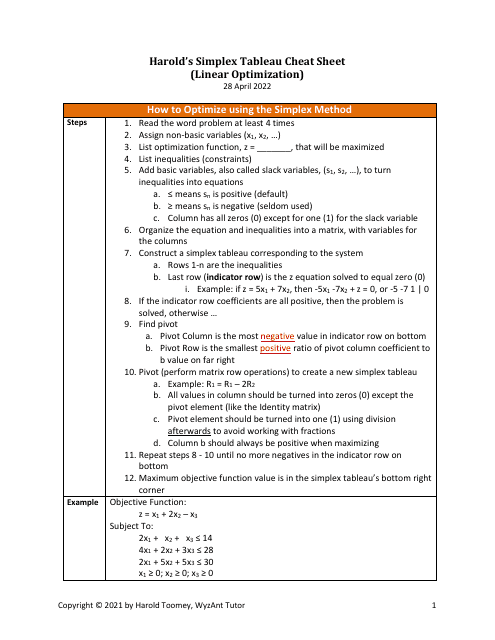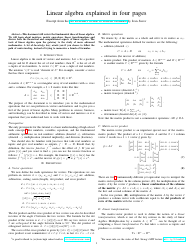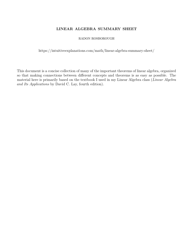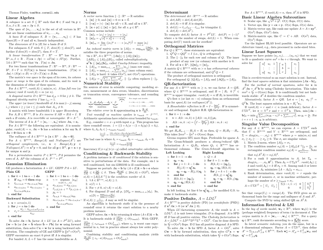Simplex Tableau Cheat Sheet: Linear Optimization - Harold Toomey
The Simplex Tableau Cheat Sheet by Harold Toomey is a reference guide for linear optimization, specifically for the Simplex Method. It provides important formulas, steps, and key concepts to help users solve linear programming problems using the Simplex algorithm.
FAQ
Q: What is a simplex tableau?
A: A simplex tableau is a way to represent and solve a linear optimization problem.
Q: What is linear optimization?
A: Linear optimization, also known as linear programming, is a mathematical technique used to maximize or minimize a linear objective function subject to linear equality and inequality constraints.
Q: Who is Harold Toomey?
A: Harold Toomey is the author of the Simplex Tableau Cheat Sheet: Linear Optimization.
Q: What is a linear objective function?
A: A linear objective function is a mathematical expression that needs to be maximized or minimized in a linear optimization problem.
Q: What are linear equality constraints?
A: Linear equality constraints are mathematical expressions that need to be satisfied as equations in a linear optimization problem.
Q: What are linear inequality constraints?
A: Linear inequality constraints are mathematical expressions that need to be satisfied as inequalities (e.g., less than or equal to, greater than or equal to) in a linear optimization problem.
Q: What is the purpose of a simplex tableau?
A: The purpose of a simplex tableau is to organize, represent, and solve a linear optimization problem in a step-by-step manner.
Q: What is a simplex method?
A: The simplex method is an algorithm used to solve linear optimization problems by systematically moving from one feasible solution to another in search of the optimal solution.
Q: What are decision variables in linear optimization?
A: Decision variables are the unknowns or variables that need to be determined in a linear optimization problem.
Q: What are feasible solutions?
A: Feasible solutions are sets of values for the decision variables that satisfy all constraints of a linear optimization problem.










